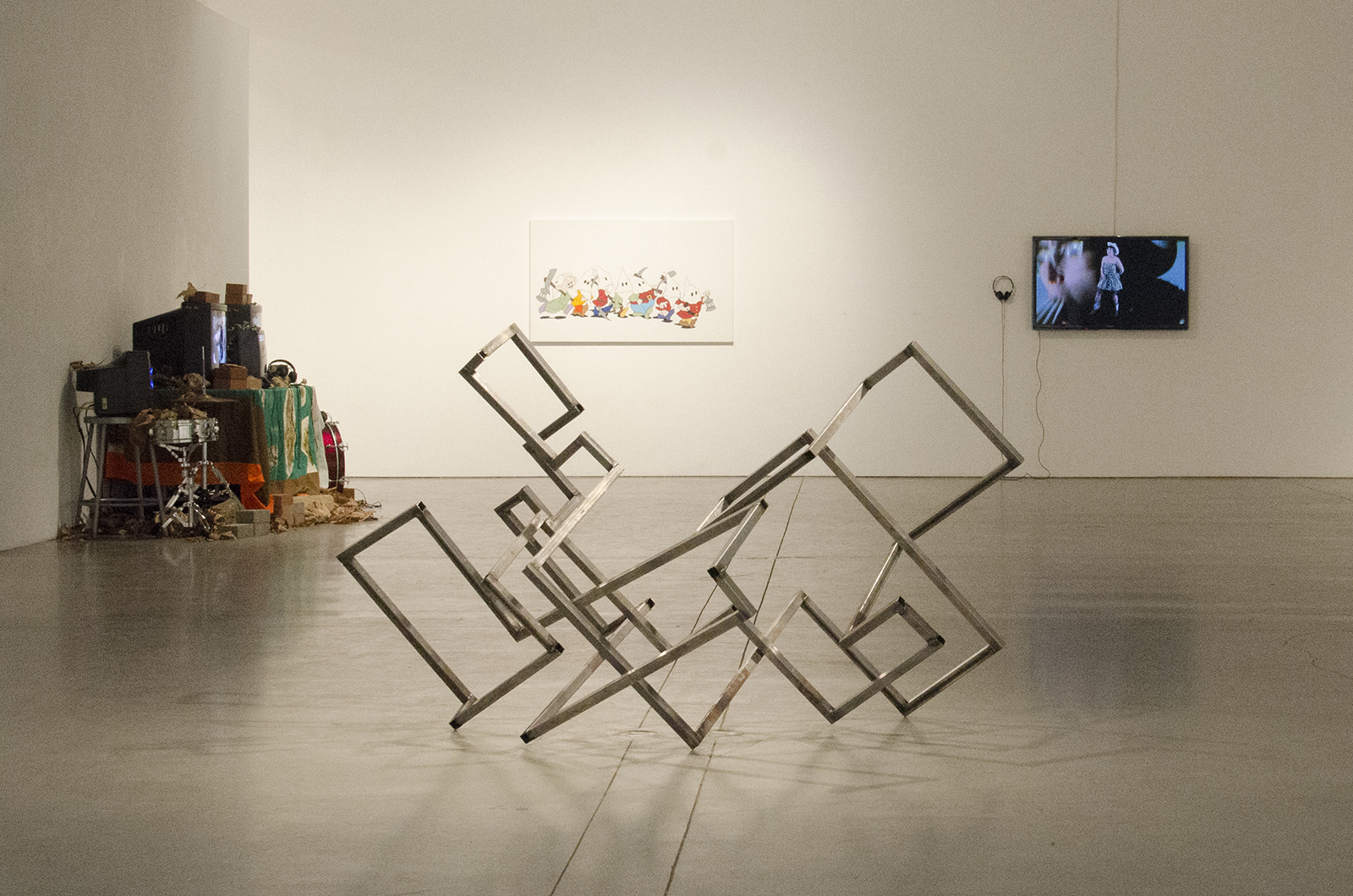Undergraduate Juried Exhibition showcased at Broad Art Center

(Sonja Bartlett/Daily Bruin)
By Andrea Seikaly
Feb. 25, 2014 12:00 a.m.
Students with smartphones are likely to be familiar with QR codes, but one UCLA artist has tried a new approach to this technological symbol by transforming the code into a work of art.
Fifth-year fine arts and psychology student Kylie Carrigan created a larger-than-life QR code and mounted it onto a five-foot tall cube. This super-sized QR code, a type of bar code that can be accessed through smart phones, isn’t just a way to get information – it is a functioning art piece featured in the Undergraduate Juried Exhibition at the Broad Art Center. The exhibition is open to the public and features paintings, sculptures, photographs, videos and installations created by undergraduate art students.
The pieces in the exhibition, which runs through Thursday, are on display in the New Wight Gallery. Carrigan said all students in the art department are able to submit their work for the annual event and a guest juror is brought in each year to select the final items from among all the submissions received. Connie Butler, chief curator at the Hammer Museum, is this year’s juror.
While there is no specific theme for this year’s show, the works of art represent the varied interests of the students and reflect many of their personal experiences. There are no size or content restrictions for the student submissions.
Once all interested students had submitted their artwork and artist statements or explanations for consideration, Carrigan said Butler took just two days to make her final selections and curate the space. This is the first year that Carrigan’s work has been chosen as part of the exhibition.
“It’s just a really great opportunity, not only for us to exhibit our work but also to get some feedback from a curator and someone who’s actually working in the places that we are all kind of aspiring to get to eventually,” Carrigan said.
She said her piece is a form of social commentary, and also functions as a link to a website with photos of the gallery. Carrigan said it is a response to the way people have become increasingly tied to technology and are always looking at their phones.
“My piece is really a look into the way that digital, Internet-capable devices are mediating our lives,” Carrigan said. “If you scan the QR code, it will actually take you to an online image gallery of all the other pieces in the show. So essentially, you’re in the gallery viewing an online gallery of the gallery that you’re standing in.”

Third-year fine arts student Caleb Adams’ photography was chosen for the exhibition. His submission consisted of a series of portraits he took while studying abroad last quarter in Barcelona, Spain.
“I noticed a tendency for a lot of older men to just not have much going on, just kind of hanging out, walking around, doing their daily things (in Spain),” Adams said.
Adams, who also creates sculptures, said he chose to submit his art for the third consecutive year because this exhibition is one of the biggest opportunities available to undergraduate art students, since they get feedback from an established curator. This is the second time Adams’ work has been selected for the juried show.
Michael Morrison, a third-year fine arts and art history student, said he was happy to find that his artwork had been chosen, as his work was not selected last year. He said his six-foot by six-foot piece in this year’s show is a black and white abstract painting of his apartment depicting the current lives of him and his roommates.
“It’s kind of a reductive form of what I foresee my apartment to be,” Morrison said. “There are four of us living there and we’re all over the place.”
Carrigan said many of the works submitted by students are pieces they have completed in previous quarters. She also said most of the submissions are made by individual artists. Collaborations are rare, though there is one such entry in this year’s exhibition – an installation of four videos placed in a grid formation on one of the gallery walls.
In terms of her motivation for submitting artwork for consideration, Carrigan said the exhibition allows for an opportunity that may not be available for students after they graduate. Receiving feedback from Butler during a walkthrough of the gallery was also one of the most beneficial aspects of this experience for Carrigan.
“We all know what we intended when we made the work, but then to get someone’s feedback (and find out) this is what they saw in it, that’s really helpful for all young artists,” Carrigan said.

